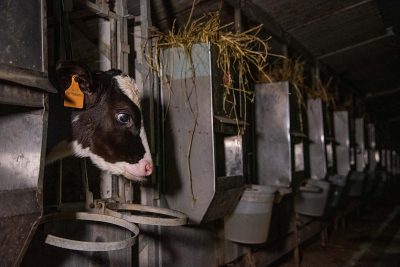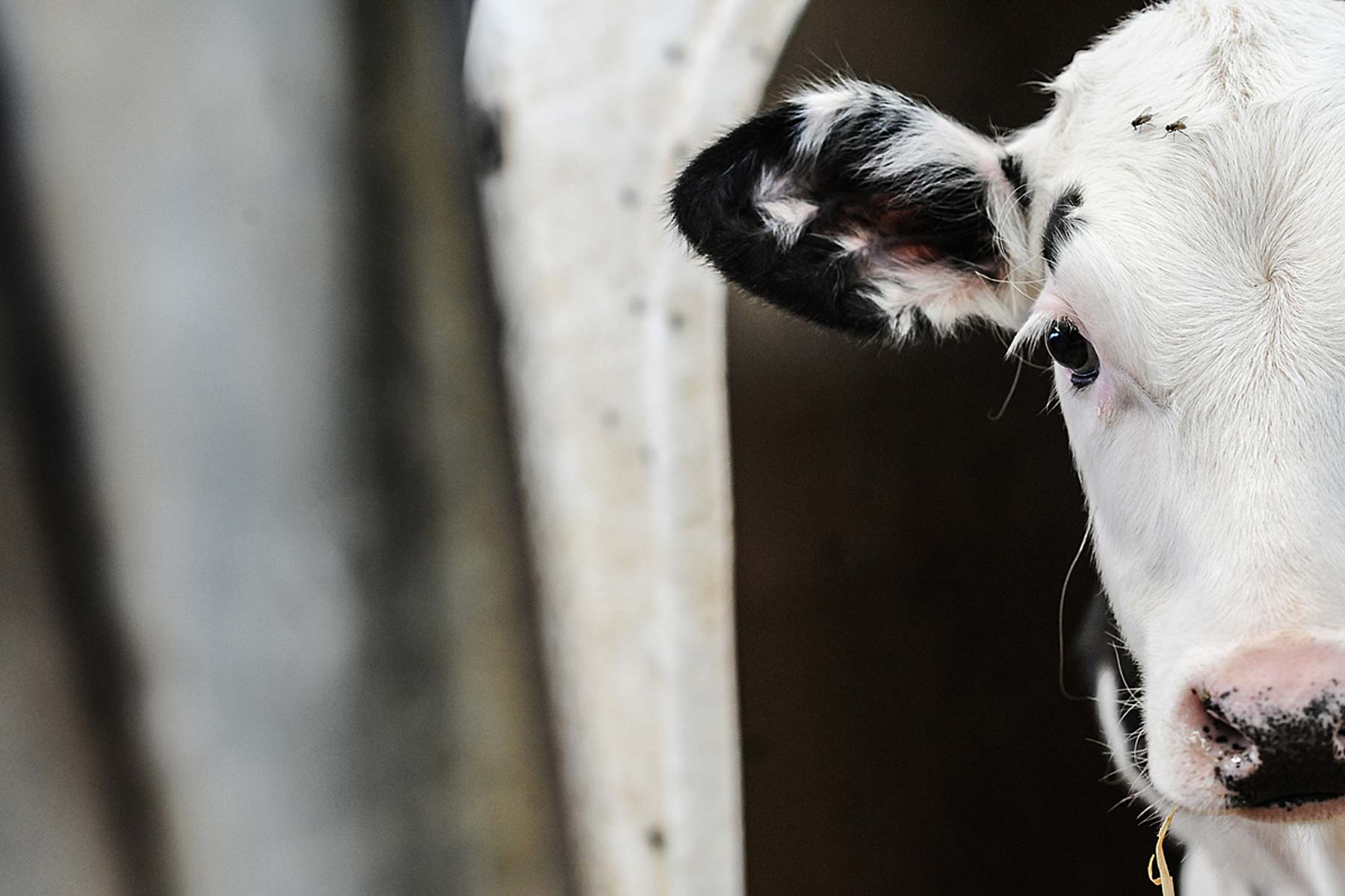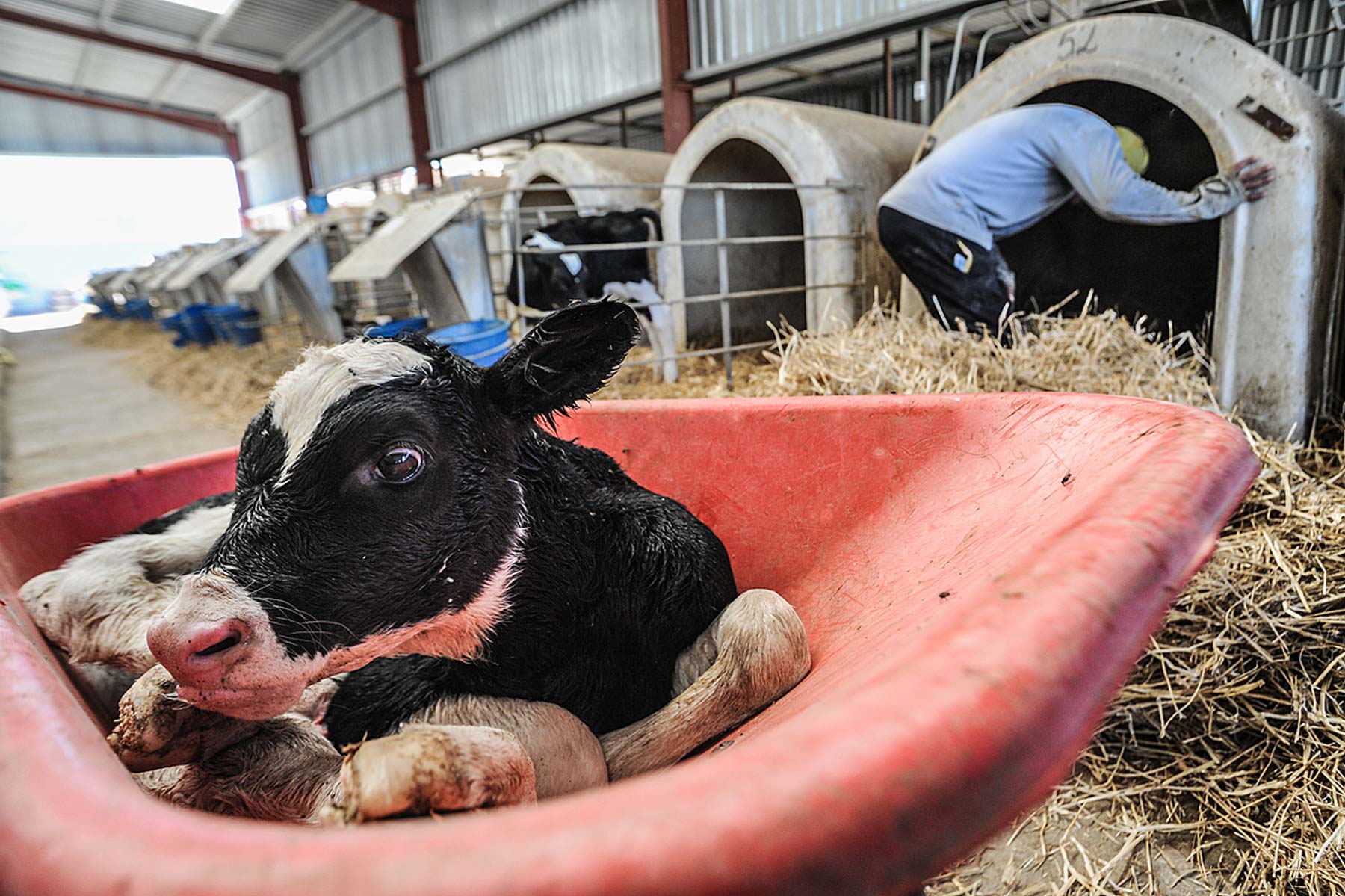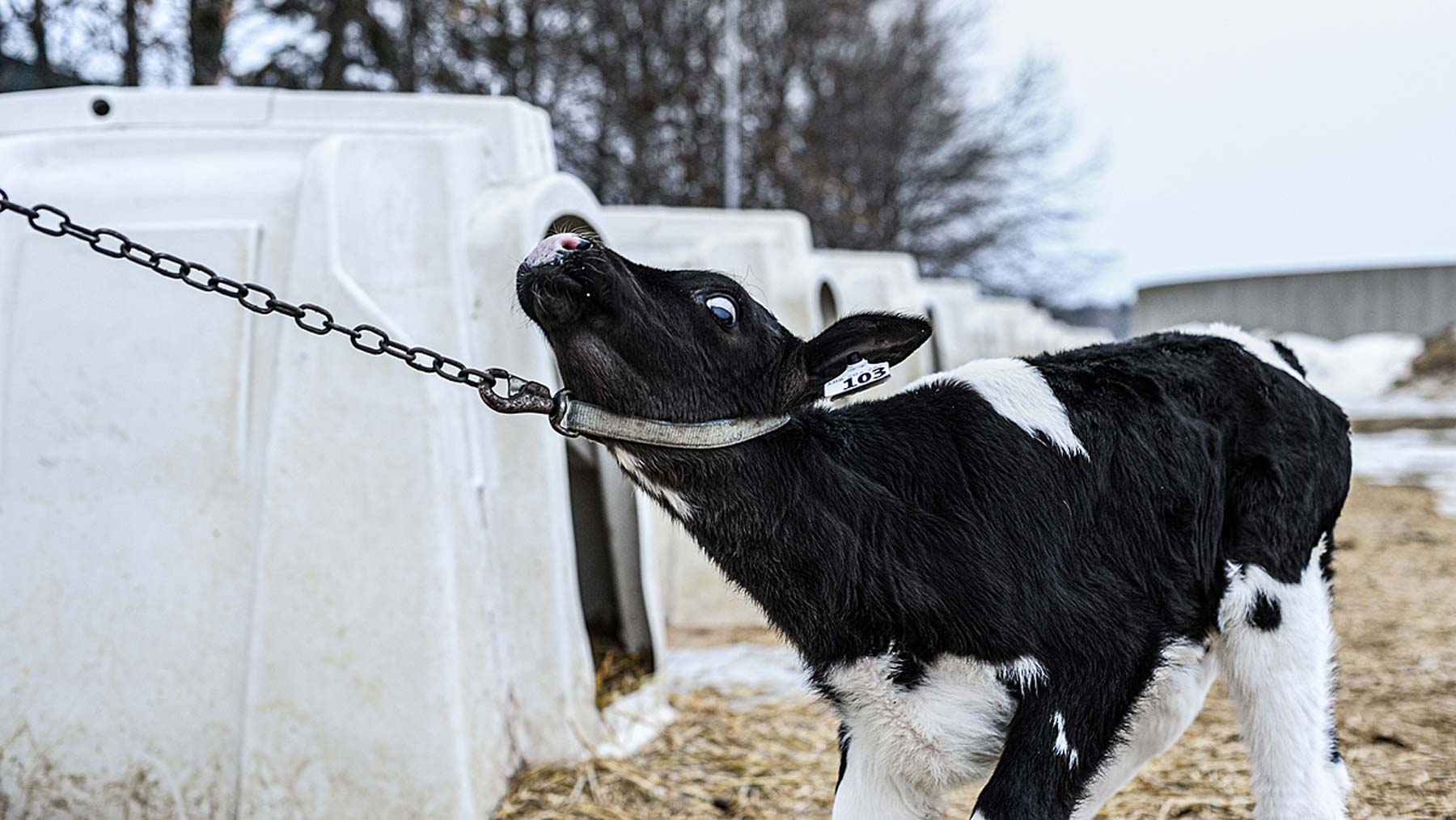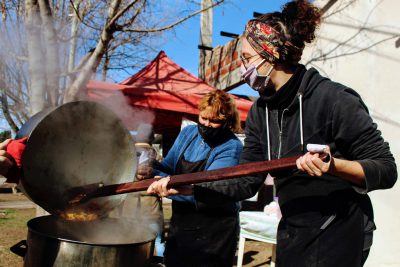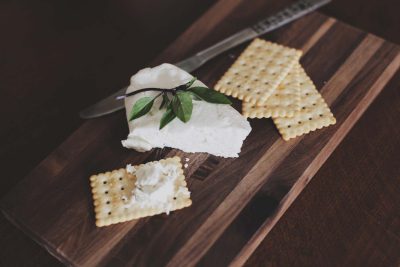While most people have some idea where veal comes from, they may know little of how those young animals are treated, or the stresses and suffering they endure. And perhaps the biggest shock of all is the veal trade’s intrinsic link to the dairy trade.
What Animal Does Veal Come From?
Veal is the meat of a baby cow whose flesh is kept pale and tender, a result achieved by lack of nutrients and exercise deprivation. The younger and more anemic the calves are, the paler their flesh. Despite the significant distress and suffering this causes, consumers continue to demand this product. Since the dairy industry produces a lot of unwanted calves – after all, cows don’t just make milk; they make it for their young – most veal actually comes from the dairy industry. Whenever we buy milk, we are also supporting the production of veal.
Bob Veal
Bob veal is the flesh of very young calves. These vulnerable animals are taken from their mothers straight after birth to stop them drinking the milk that was made for them. They may live just a few days or weeks before they are slaughtered.
Formula-fed
It’s not just the age of the calves that makes their flesh pale, it’s the fact that they are kept anemic though denying them any exercise that would grow muscle, and feeding them a formula that is deliberately low in iron.
Non-formula-fed
The meat from these young animals is pinker, partly because the animals are a little older (up to 26 weeks old), and they have usually been permitted a little fiber in their diets.
Rose Veal
In the UK, the meat of these slightly older animals is marketed as ‘rose veal’ which sounds a lot more appetizing than “the pale, weak flesh of a distressed calf”.
Young Beef
In Europe, the meat from cows up to the age of 12 months is sometimes marketed as ‘young beef’. After 12 months, a calf is officially considered an adult and their flesh is then marketed as beef.
Pasture-raised Veal
A few animals may remain with their mothers for a few weeks and will spend some time at pasture before being killed but it is much more usual for veal calves to be kept intensively.
How Old Is A Calf When Killed For Veal?
They can be anything from a few days to around six months.
Why Is Veal Cruel?
From the moment they are born, calves reared for veal are likely to be deprived of everything a young animal needs to feel safe, secure, healthy and free from distress.
Early Separation
Calves born to mothers in the dairy trade will be taken away right after birth to stop them drinking their mothers’ milk. Having carried her baby for nine months, it is incredibly distressing for a mother to lose her young, and both she and her calf may call for one another for days.
Crates
The young calves are confined in individual crates that are no bigger than six by seven feet. This is a deliberate act to stop them moving and developing muscle that could make their flesh less ‘tender’. These social animals who need the warmth and safety of their mother are instead isolated, alone and frightened. These crates remain legal in the USA but are banned in Europe and the UK.
Bad Nutrition
As mentioned, calves’ flesh is pale because they are fed a formula that is deliberately lacking in key nutrients. This keeps them weak and anemic.
Restricted Space
Even those calves who are not confined to crates may be kept chained in hutches or otherwise have their movement severely restricted. These are young animals who love to run, jump and play but they are denied all these natural pleasures.
Increased Disease Susceptibility
Because of the emotional and physical stresses placed on these young animals, they are prone to a range of diseases, including bovine respiratory disease (BRD), diarrhea, arthritis and otitis (infection of the middle ear).
Drug Use
And increased susceptibility to illness and disease means that the use of drugs in the veal trade is commonplace. One Dutch PhD thesis found that antibiotic use in the veal trade between 2007 and 2010 was “excessively high” and although the intensive use of antimicrobials is criticized it remains commonplace.
Cruelty To Calves
Unsurprisingly, investigators who get access to veal farms often find some of the most tragic sights – animals suffering neglect, illness, loneliness and outright abuse. For example:
- In 2009, HSUS filmed at a Vermont farm and found downer calves being kicked, slapped, and electrically prodded.
- In 2010, Mercy for Animals found baby calves chained by their necks in narrow stalls, where they could not even turn around or walk. This was at a large farm in Ohio.
- In 2014, Mercy for Animals filmed at a Canadian veal farm where baby calves were confined, chained, and beaten.
- In 2019, ARM filmed calves kept in pitch-black conditions for up to 18 hours a day in crates that would not even allow them to turn around. According to investigators, the calves were violently thrown into the trailer.
Abnormal Behaviors
Scientists recognize that the stress these young animals are subjected to is evidenced in abnormal behaviors such as eye rolling, tongue rolling and the manipulation of their pen mates or any material available to them. They admit that: “these behaviors can be a sign of mental suffering”.
Abnormal Gut Development
Digestive issues are all too common in veal calves because they are not fed the food that they need. As a result, they may experience abnormal gut development and ulcers.
Transport
Young calves do not cope well during transportation. Loading and unloading is stressful and leads to increased heart rate and a compromised immune response. Young calves are susceptible to cold and heat stress as they are not yet able to control their body temperature, and they often suffer bruising and diarrhea en route. Mortality rates during transportation can be desperately high.
Is It Bad To Eat Veal?
There is so much suffering and misery in the veal trade and we would encourage people to boycott both veal and dairy as the two are so closely connected. But there is suffering in every aspect of the meat, egg and dairy industries, and almost all animals slaughtered are still babies – chickens are only six weeks old, for example, while pigs and sheep are just a few months old.
Conclusion
Veal is a product of misery and suffering, and the trade continues only because people continue to buy the meat or milk. The power to end this trade is in our hands! Since we don’t need to eat meat or any other animal products to be healthy, we’d urge people to choose plant-based foods at every opportunity. They are better for you and the planet, as well as animals. It’s what we call a win-win-win.
